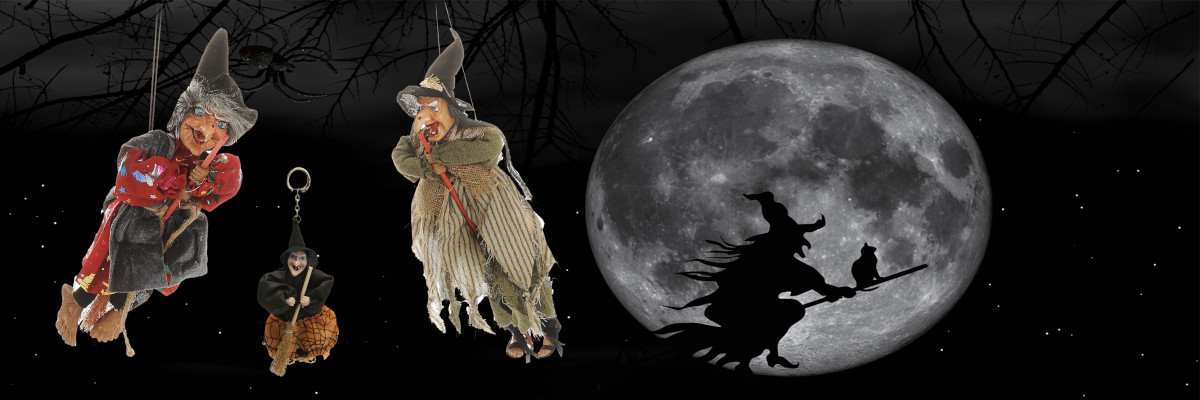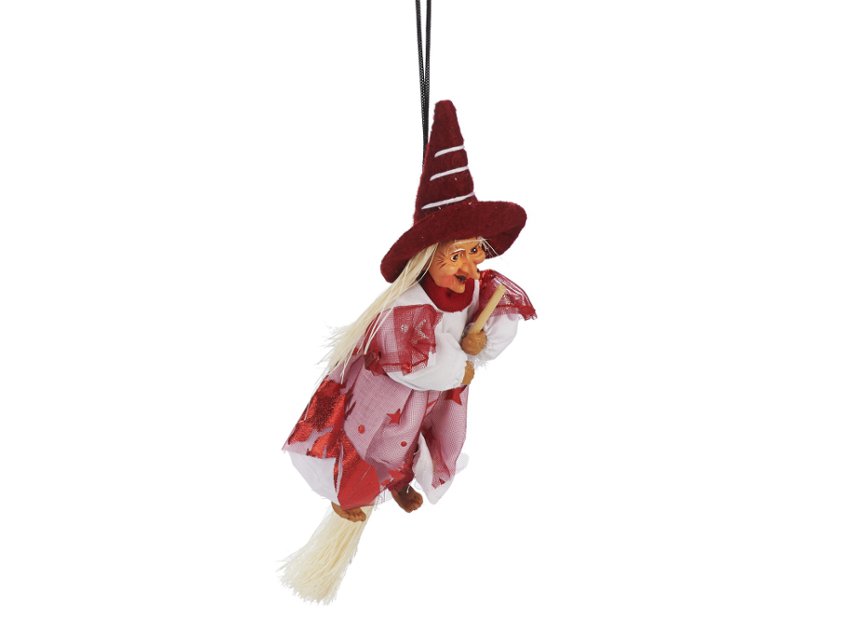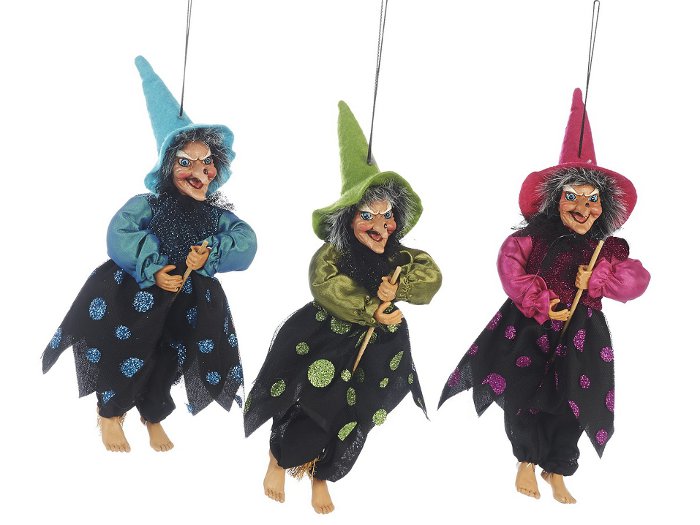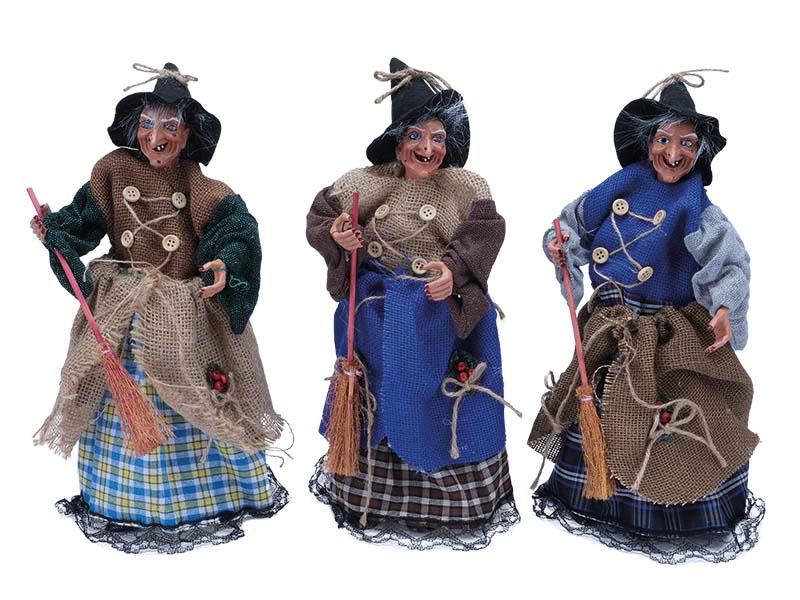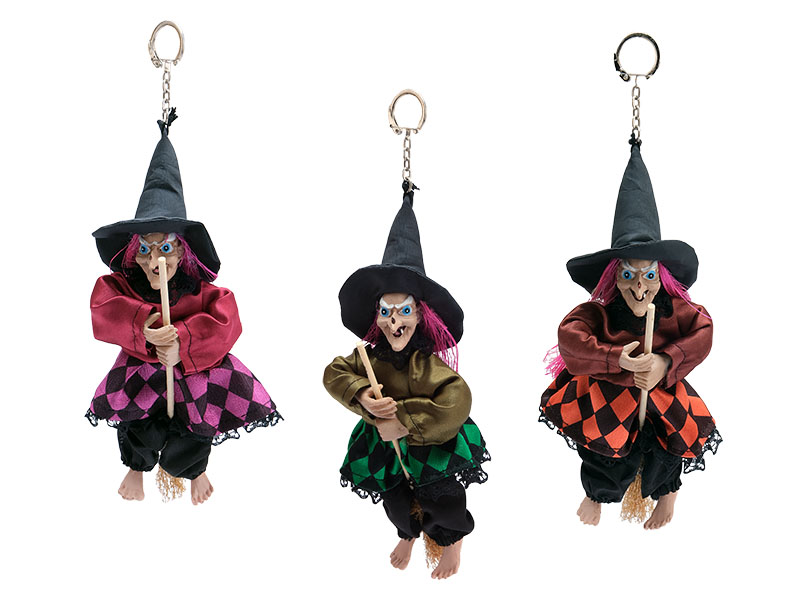Top-Seller
More information? sign in.
Witch figurines: large selection for dealers
Witch figurines are a popular souvenir - especially in places that are already said to have a connection to magic or the supernatural through legends and folk beliefs. Witches have a mystical and mysterious effect on people. But where does this mystery come from and what still connects people with witches today? The cult of witchcraft is nowadays more of a cultural asset than a horror scenario. Not for nothing do witch figurines enjoy great popularity, especially as decorative items. Therefore, in our witch figurines store you will find a large selection to expand your assortment with scary and beautiful witch figurines.
Buy witch figurines: Articles for every taste at EURO SOUVENIRS
We at EURO SOUVENIRS offer you very different witch figurines and sets in our witch figurine store. These are ideal as gifts for loved ones or for decorating your own four walls. Expand your assortment with a diverse product category, whose items differ significantly in size, appearance and function.
We have in stock for you a wide selection of flying witches with functions or flying witches without functions. Flying witch figurines include witch variations in different sizes that sit on a broom or a swing. The witch figures with function are equipped with sound and light effects. By pressing the control button, for example, the laughter of the witch can be heard, while her eyes flash.
Our range of witch figurines is complemented by standing witches with function and standing witches without function. These witch figurines come cute, playful or scary. They differ in their clothing such as skirt color and pattern. You can get these souvenir witches from us in many different sizes up to 70 cm.
If you want to expand your range with smaller witch figurines and souvenir witches, we also have the right products for you. Our witch keychains are a great accessory and much smaller than most of our other witch figurines. They also predict the weather for you and your customers by their color. For all lovers of snow and glitter balls, a snow globe with flying witch is also part of the assortment. The nine-centimeter-high snow globe features a detailed 3D landscape on its base.
Incidentally, witch figurines are now the best-selling souvenir in the Harz Mountains and a widespread advertising symbol of the region. It has displaced other symbols of the Harz such as the Green Fir or the Wild Man from the top position and can be found in practically every souvenir store in the Harz.
The most common depiction of witches in witch figurines is that of an old woman with long gray, disheveled hair, colorful robes, matching pointed hat (now appropriately also known in many places as a witch hat) and hooked nose. In the meantime, however, there are also representations of younger witches. In our store you will find large and small witch figurines in different designs.
Personalize witches: Customize witch figurines
If you want to personalize your witches, you can have various products from our witch assortment engraved or printed with a text or logo. This is particularly worthwhile for businesses with a witch theme, but it can also be an interesting option for hotels and other businesses from particularly "bewitched" regions such as the Harz Mountains or the Black Forest. Choices include snow globes, magnets or manicure sets. For example, provide your witch figures with different (female) first names for a classic merchandise business and enchant your clientele with the imaginatively designed witch figures.
History and origin: what belongs to the witchcraft?
In fairy tales, the witch is still considered a woman with magical powers with which she can cause harm. In addition, the witch figures from stories and legends are said to have a connection with demons or the devil. So this interpretation has little in common with cute witch figurines for sideboards or windowsills. A witch was also considered to be someone who could predict the future. But also the preparation of magic potions, the participation in dark rituals, flying with the typical witch's broom or influencing the weather were part of the witchcraft. These characteristics were part of the so-called witch codex from about the year 1400.
The burning of witches, especially at the stake, is fortunately a ritual that has long since ceased to be performed. It had its origins in the French-speaking world. In Germany, the term first appeared in the 15th century. In countries such as Spain, Portugal or Italy, the burning of witches remained largely unpopular. Overall, this gruesome ritual served mainly as an extreme deterrent for the rest of the population and, unfortunately, as a great spectacle at the same time. For the church, burning witches was the only conceivable means of completely purifying the defiled soul and ridding oneself of sins. The burning of witches came to an end with the Enlightenment. In many cities today, the victims of the witch burnings are commemorated by monuments or plaques, including Freiburg im Breisgau. The city is located in the Black Forest, which also has strong historical and literary links to the popular belief in witches and magic.
Due to modern interpretations of various witch characters and fantasy works, witches now partly have a better reputation. Where the word "witch" originally comes from is the subject of linguistic research. Similar terms exist, for example, in Dutch, but also in the languages of the Scandinavian countries (Norway, Denmark, Sweden) as well as in English, which suggests that all versions have a common origin in prehistoric Germanic, whose speakers later spread further across Europe.
Especially at the Walpurgis festival in the last night of April, witches still enjoy great attention - and not only in the Harz Mountains, where the origin of this tradition lies with the Brocken or Blocksberg. In Europe, it even goes back to pre-Christian times. The "Urharzer" already celebrated their spring festival in the pagan faith. Wodan, the supreme Germanic god, held a wedding and people welcomed the spring, naturally in exchange for appropriate offerings. Winter and all evil spirits were to be driven away. With masks, disguises, fire and shots this had to succeed finally, said the custom. "May has come," says the song, which is still sung today on Walpurgis Night.
Dancing Brocken witches and witch figures of all kinds still decorate the houses, front gardens and sometimes the streets in the Harz Mountains every year during this time. Such strongholds include Bad Harzburg, Bad Grund, Braunlage and Thale. Above all this, as already mentioned, towers the Brocken, Central Germany's highest mountain at 1142 meters. Looking at the Brocken summit from afar on a full moon night under a clear sky has something magical about it, even in our modern times. However, witch figurines exist only for decoration, as advertising material and, of course, as souvenirs.
How did the witches on the Brocken become so famous? The origin lies in a tragedy
The witch figures on the Brocken gained national fame mainly through a literary work. So it happened that Johann Wolfgang von Goethe sent his Faust in the eponymous tragedy to the Brocken on Walpurgis night:
The witches go to the Brocken
the stubble is yellow, the seed is green.
There the great heap gathers,
Mr. Urian sits on top.
So it goes over stone and stick,
The witch farts, the goat stinks.
When Goethe published his work in 1808, the Brocken also became famous outside Germany as the witches' mountain. On the evening of April 30, according to popular belief, all the witches gather near Thale on the Hexentanzplatz to fly together to Blocksberg. The most common witch flying implement is the brushwood broom, but ordinary brooms or pitchforks were also considered typical. Witch characters such as Bibi Blocksberg or The Little Witch took up the myth in a child-friendly way and ensure continued popularity to this day.
Incidentally, the origin of the name Walpurgis Night goes back, highly untypical for everything else around the stereotypical witch figures, to a woman of the church. St. Walburga, a learned woman, was abbess of the nunnery of Heidenheim in the 08th century. She had nothing at all to do with witches or the devil during her lifetime. Nevertheless, Walpurgis Night is derived from her name: Walburga became the patron saint of sailors and the patron saint against storms and evil spirits due to miracles attributed to her. She was canonized on May 1 around the year 870, almost 100 years after her death. Since the Middle Ages, this date was considered Walburga's day of remembrance. Thus the night to 01 May is called Walpurgisnacht. Today, this spring festival represents a rather joyful event, May fires are still lit. However, fewer and fewer witch figurines are burned.
Carnival, Halloween and Co.: today's witch figures.
In addition to the popular witch figures, witches are always among the most popular costumes for carnival and Halloween. This jester figure is especially popular and widespread in the Swabian-Alemannic carnival. Where the origin comes from, however, is not sufficiently clarified. The oldest mask of a witch figure can be attributed to the 18th century and comes from Tyrol. Today, the costume of a witch in the Swabian-Alemannic carnival provides straw shoes, striped socks, white peasant underwear and a skirt. The costume is rounded off with the typical wooden mask. Alternatively, the face can be made up. The obligatory witch's broom must not be missing here either.


